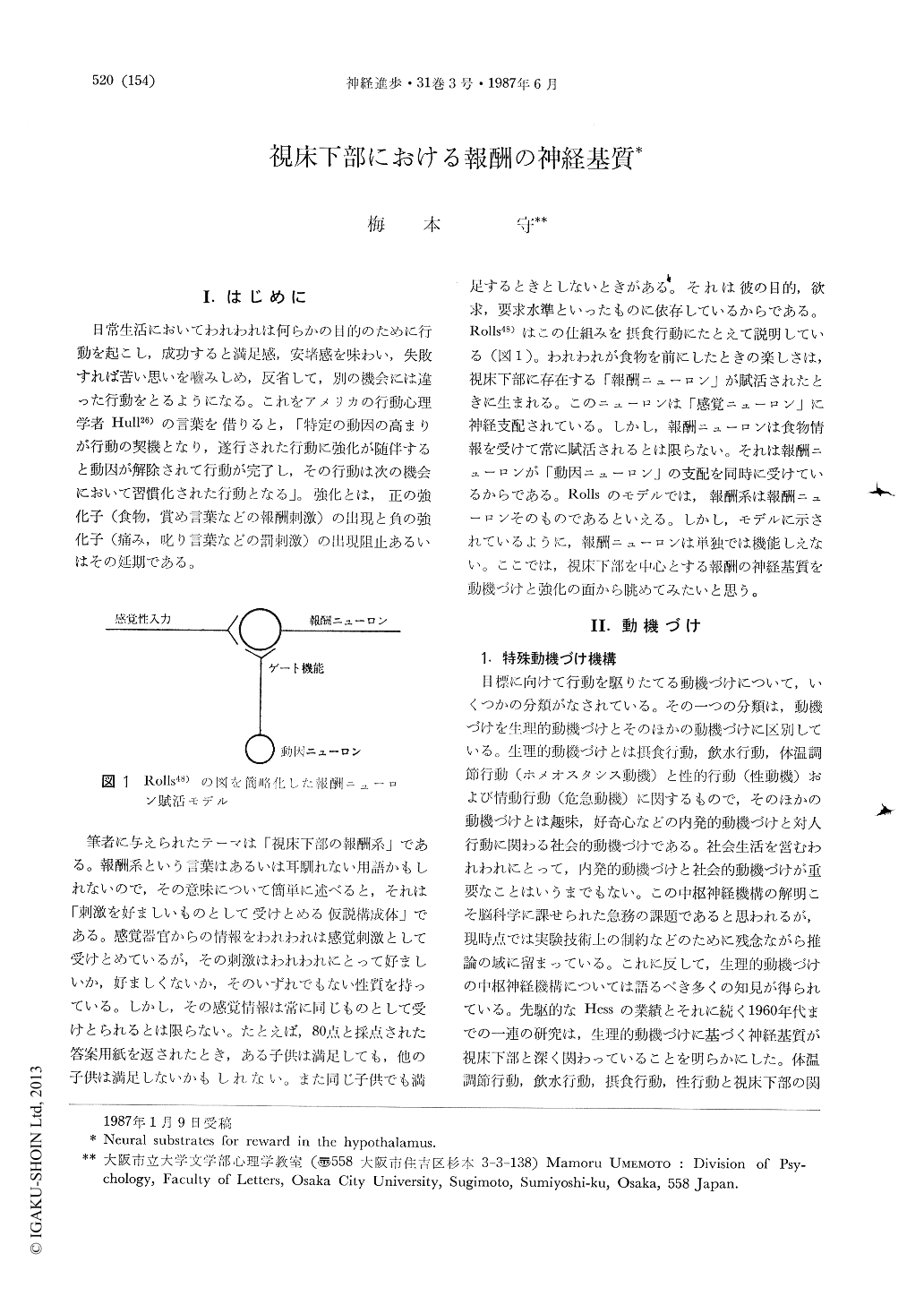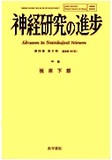Japanese
English
- 有料閲覧
- Abstract 文献概要
- 1ページ目 Look Inside
I.はじめに
日常生活においてわれわれは何らかの目的のために行動を起こし,成功すると満足感,安堵感を味わい,失敗すれば苦い思いを噛みしめ,反省して,別の機会には違った行動をとるようになる。これをアメリカの行動心理学者Hull26)の言葉を借りると,「特定の動因の高まりが行動の契機となり,遂行された行動に強化が随伴すると動因が解除されて行動が完了し,その行動は次の機会において習慣化された行動となる」。強化とは,正の強化子(食物,賞め言葉などの報酬刺激)の出現と負の強化子(痛み,叱り言葉などの罰刺激)の出現阻止あるいはその延期である。
筆者に与えられたテーマは「視床下部の報酬系」である。報酬系という言葉はあるいは耳馴れない用語かもしれないので,その意味について簡単に述べると,それは「刺激を好ましいものとして受けとめる仮説構成体」である。感覚器官からの情報をわれわれは感覚刺激として受けとめているが,その刺激はわれわれにとって好ましいか,好ましくないか,そのいずれでもない性質を持っている。しかし,その感覚情報は常に同じものとして受けとられるとは限らない。たとえば,80点と採点された答案用紙を返されたとき,ある子供は満足しても,他の子供は満足しないかもしれない。
On the basis of recent expeimental findings, this article criticized the view that central dopamine (DA) systems have implicated neural substrates for brain-stimulation reward. Electrophysiological studies (Gallistel et al, 1981, Pompré & Shizgal, 1986) suggested the absolute refractory period and conduction velocity of the fibers involved in the control of self-stimulation (SS) behavior are shorter and too faster than those of unmyclinated fibers. They concluded that the fibers involved in SS might be thick and myelinated. Biochemical studies (Umemoto et al, 1984) demonstrated that DA-depleted and normal rats showed SS behavior in DA regions with quite similar manner. Pharma-cological studies using neurotoxic substances (Ger-fen & Clavier, 1981, Velley et al, 1983, Takeichi et al, 1986) suggested possibilities that the intrinsic neuron plays a crucial role for maintaining SS in the sulcal prefrontal cortex, lateral hypothalamus and ventral tegmentum. It is well known that the destruction of the fibers and bundle which run through the length of the brain have no effects on SS behavior (Umemoto, 1968, Corbett et al, 1977). Furthermore, brain-stimulation reward is ipsilateral phenomenon (Yadin et al, 1983). Considering much of the characteristic common between brain-stimulation reward and morphine, the author have pointed out that the evidence for the DA hypothesis, that is, DA plays the crucial role for motivational aspects in SS, is far from con-clusive, and presented a tentative neural circuit model for brain-stimulation reward (Fig. 5).

Copyright © 1987, Igaku-Shoin Ltd. All rights reserved.


